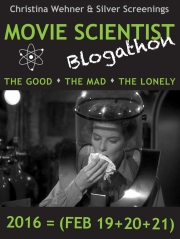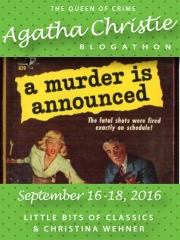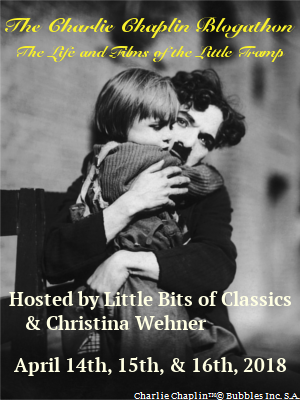I was looking at adaptations of Robert Louis Stevenson’s The Strange Case of Dr. Jekyll and Mr. Hyde on Wikipedia and there are well over twenty movie and TV versions, in various languages. The first movie was made in 1908 and there are also numerous stage adaptations (and one Broadway musical). However, there are three main films that are best remembered – from 1920, 1931, and 1941 – and I’ve been gradually watching them in preparation for reading the book. Last night, I finished the 1941 version and have therefore completed my Jekyll and Hyde saga. I think I will have to embark on a slightly happier saga, next.
The most critically acclaimed and well thought of is the 1931 version, starring Fredric March, who won an Oscar for his performance. It’s 98 minutes, but it’s a potent little film, very sexually charged and as a result it was not the most enjoyable film for me to watch, even though it was extremely well done.
 Dr. Henry Jekyll is a man who is very aware of his shortcomings. He gives much of his time to a free hospital and wants to be a good man and madly loves his fiancé, Muriel Carew (Rose Hobart), but also is keenly aware of how easily he can fall into temptation, such as when he meets Ivy (Miriam Hopkins), a prostitute who unclothes (off-screen) and hops into bed and offers to show her gratitude for his saving her from being molested in the street. He resists, however, but he urges Sir Danvers, his future father-in-law, to set an earlier date for his wedding to Muriel. Sir Danvers refuses and takes his daughter off on a vacation.
Dr. Henry Jekyll is a man who is very aware of his shortcomings. He gives much of his time to a free hospital and wants to be a good man and madly loves his fiancé, Muriel Carew (Rose Hobart), but also is keenly aware of how easily he can fall into temptation, such as when he meets Ivy (Miriam Hopkins), a prostitute who unclothes (off-screen) and hops into bed and offers to show her gratitude for his saving her from being molested in the street. He resists, however, but he urges Sir Danvers, his future father-in-law, to set an earlier date for his wedding to Muriel. Sir Danvers refuses and takes his daughter off on a vacation.
It is the inability to wait for his wedding that drives Jekyll into Hyde. Although he had posited at the beginning of the film his belief that man was two – good and evil – and had succeeded in creating Hyde, he seems to have been somewhat alarmed by the creature that came out. He only turns to Hyde again when he decides that the months of waiting for Muriel are too long, and he hasn’t forgotten Ivy.
This is where the movie gets too much for me. Hyde locates Ivy and then keeps an apartment for her where he can visit, keeping her there through sheer terror and brutality. Miriam Hopkins plays the role excellently, but her terror is so well played and Hyde’s lustful evil is so well played that it is deeply disturbing to watch. March’s Hyde is one of the scariest characters I have ever seen; he plays him like an animal. As Jenny Davidson pointed out in her notes to my Barnes & Noble edition of the book, Dr. Jekyll and Mr. Hyde came out the same year as the famous Universal monster and horror movies (Frankenstein, Dracula) but is far more frightening than either, which I have to agree with.
When my sister and I first saw Hyde, she remarked that he looked like the missing link. They were, apparently, going for the ape look and March said that he played Hyde as a separate entity, a monster, who takes over Jekyll. He also makes Hyde a highly athletic character, jumping over railings and down stairs. His Hyde has a frenetic energy and will for living. His Jekyll, on the other hand, strikes just the right balance between showing his capacity for genuine goodness, nobility and concern for others, his genuine loathing of what he’s done, his passion for Muriel, but also the desires that lurk inside him. His Jekyll has just as much zest for living as Hyde, only expressed in different ways.
 The 1941 version is a fairly close remake of the ’31 version: the sequence of events are the same, certain lines are the same, but somehow it lacks the tension, urgency and emotion of the other. It was made during the code, which means it is far less explicit, but I am not sure that alone accounts for the disengaging quality of the film.
The 1941 version is a fairly close remake of the ’31 version: the sequence of events are the same, certain lines are the same, but somehow it lacks the tension, urgency and emotion of the other. It was made during the code, which means it is far less explicit, but I am not sure that alone accounts for the disengaging quality of the film.
Spencer Tracy seems miscast as Jekyll/Hyde. He doesn’t really look like he belongs in the period; he’s too reserved as Jekyll and does not really project embodied evil as Hyde. Tracy reportedly agreed that he was not suited for the role and tried to get out of it.
The film also stars Ingrid Bergman and Lana Turner and as soon as I saw that I said to my sister “and you can guess who plays which role,” but I was wrong. Ingrid Bergman was tired of playing saintly women and requested the role of the prostitute (who has been transformed into a barmaid in this version), but she still makes for a pretty refined barmaid with a cockney/Swedish accent. Lana Turner, on the other hand, seems woefully inadequate and young for the role of refined fiancé.
Tracy’s Hyde does not look as different from Jekyll and at one point Ivy (Bergman) almost thinks she recognizes Hyde when she sees Jekyll. It is an intriguing idea, but is never really followed up or explored. Perhaps another part of the problem is that in this version, Jekyll considers madness to be a result of the imbalance of the good and evil in man; madness is when good is absent and there is only evil. It is in his attempts to find a means to cure madness that he first creates Hyde. The problem is that his Hyde seems more unhinged than truly evil and the affect is diluted.
Where the ’31 and ’41 versions are about sexual repression, the 1920 Dr. Jekyll and Mr. Hyde is all about John Barrymore. Although he’d made a few movies before 1920, none of them were especially well received and it wasn’t until his much praised work in Dr. Jekyll and Mr. Hyde that he made his successful transition from stage to screen. It’s a silent film, only 67 minutes, but actually quite good.
 Barrymore’s Dr. Jekyll is a saintly doctor, so saintly that his friends wonder at the man. No man can be that good, they say. One friend (what friends!) suggests that in serving others, he is neglecting his own development as a person. Jekyll and his friends all agree that man has two selves, but Jekyll begins to wonder if there is a way for him to participate in the pleasures described, but without fear for his immortal soul. In this version, then, he is not necessarily trying to make Jekyll good and separate out the good and evil; he is just trying to create an outlet for his evil without it affecting him (a concept found in the original book).
Barrymore’s Dr. Jekyll is a saintly doctor, so saintly that his friends wonder at the man. No man can be that good, they say. One friend (what friends!) suggests that in serving others, he is neglecting his own development as a person. Jekyll and his friends all agree that man has two selves, but Jekyll begins to wonder if there is a way for him to participate in the pleasures described, but without fear for his immortal soul. In this version, then, he is not necessarily trying to make Jekyll good and separate out the good and evil; he is just trying to create an outlet for his evil without it affecting him (a concept found in the original book).
What most people talk about in this movie is the transformation scene where Barrymore initially demonstrates the change from Jekyll to Hyde without makeup and solely through the changing of his expression. What is also different about his Hyde is that he is old, decrepit and hideous.
Another difference is that the highlight, the moment when Hyde commits his ultimate act of murder, is when he kills his fiancé’s father, whereas in the other versions it is when Hyde kills Ivy. But that illustrates the difference in focus between the movies. The others are about evil specifically in regards to lust and this one is more concerned with evil overall, in all areas of life.
Poor John Utterson (who narrates the story in the novel) fares rather poorly in all three movies, which is understandable. In 1920, he is a good, stalwart friend (rather younger than in the book) who also seems to be in love with Jekyll’s fiancé. In 1931, he is reduced to being just a random houseguest and in 1941 he is eliminated altogether and emerges in the character of Dr. Lanyon, who is a composite of Utterson and Lanyon.










FictionFan
October 22, 2014 at 4:49 pm
I’ve seen the Spencer Tracy and Fredric March versions and agree that the March one is far scarier. I think I enjoyed it more than you perhaps, but I agree it’s deeply unsettling to the point of being uncomfortable. I had no idea so many other versions had been made…
LikeLike
christinawehner
October 22, 2014 at 6:27 pm
Yes, I was amazed, too, at how many adaptations there are; it seems like the character Jekyll/Hyde is as universal as characters like Sherlock Holmes, with about as many remakes.
It’s such a compelling story and I have to admit makes for very compelling movies, especially the 1931 version. It is not a film easily forgotten.
LikeLiked by 1 person
Earl
February 8, 2017 at 4:31 pm
Something else not easily forgotten is Spencer’s Fantasy in the 1941 version. Standing tall with an evil grin in a chariot with a whip cracking it over the heads of his galloping horses…no wait a moment, it’s not horses, it’s Lana and Ingrid!!! harnessed in tandem, not wearing clothes, running for dear life, pulling the good doctor no one knows where!!! I daresay I’ll remember that scene till my dying day.
LikeLiked by 1 person
christinawehner
February 8, 2017 at 8:40 pm
Wow, how could I have forgotten that one? It all comes back to me now, though. That was definitely quite the image! Somebody had an extraordinary imagination.
LikeLike